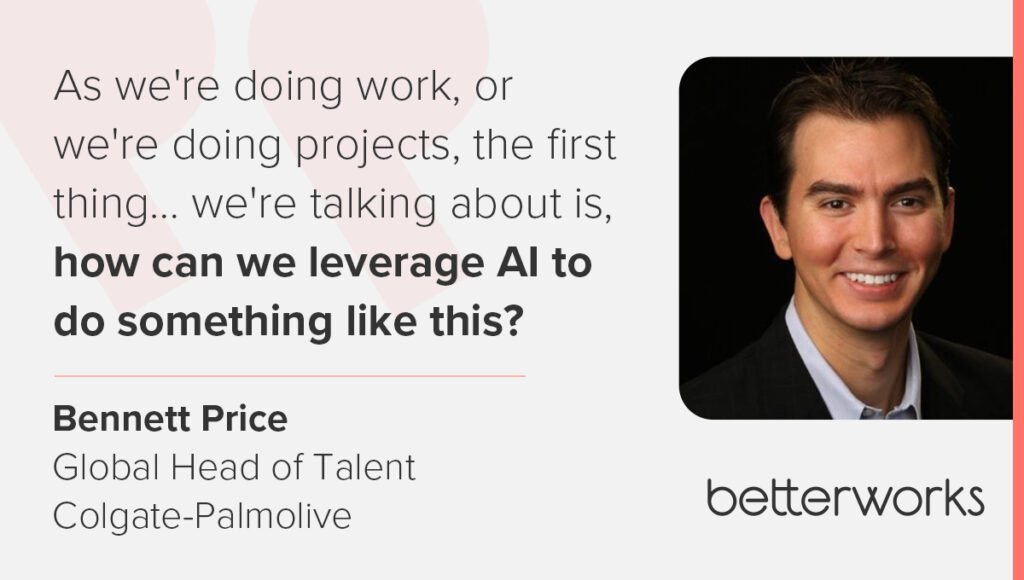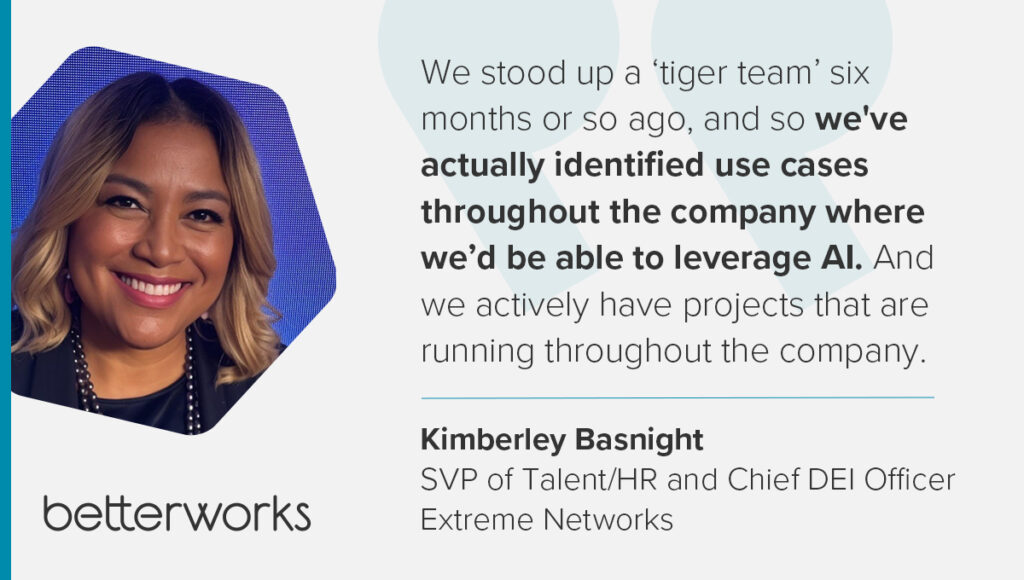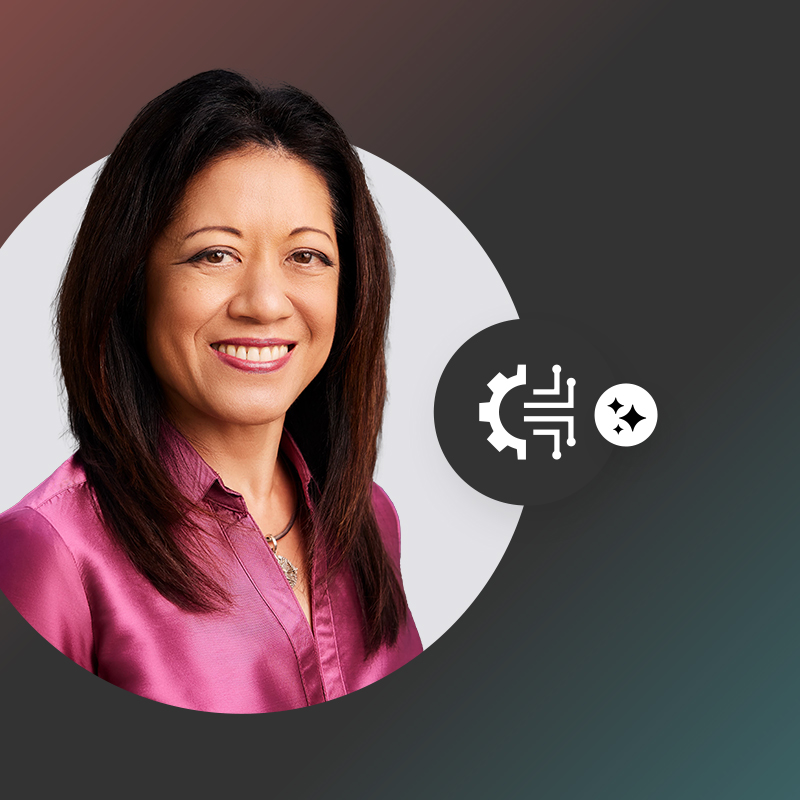As AI redefines the horizons of work as we know it, the real revolution is unfolding in a much more human place: within organizational culture. Embracing AI becomes a litmus test for a deeper, more essential shift toward embracing continuous change and fostering a culture that prizes curiosity and learning.
Today’s business climate calls upon HR leaders to not just witness but lead a transformation that goes beyond technological adoption to touch the very core of organizational culture and leadership.
Embracing AI becomes a litmus test for a deeper, more essential shift toward embracing continuous change and fostering a culture that prizes curiosity and learning.
The journey ahead is clear: to thrive in this new era, the focus must shift from merely integrating new technologies to cultivating an environment that champions adaptability and continuous innovation.
That’s why we invited Kimberley Basnight, SVP of talent/HR and chief DEI officer at Extreme Networks, and Bennett Price, global head of talent at Colgate-Palmolive, to join Betterworks CEO Doug Dennerline for a fireside chat at EmpowerHR.
Find out how Kimberley and Bennett are using AI adoption as an opportunity to build company cultures that are adaptable, resilient, and open to change.
Fostering a culture of continuous learning and curiosity
Adopting AI provides far more value to your business than simply optimizing processes. Leaning into new technology also engenders a workplace where continuous learning, adaptability, and innovation are deeply ingrained values. This shift is essential for organizations aiming to thrive in an era where agility and knowledge are key differentiators in achieving success.
Bennett’s proactive stance on integrating AI into HR processes exemplifies how this technological adoption fosters an environment where learning and exploration are at the forefront of strategic initiatives. By encouraging his teams to delve into AI for enhancing HR functions like career pathing, Bennett highlights the practical benefits of AI as well as the broader cultural shift towards embracing change and seeking novel solutions. “As we’re doing work, or we’re doing projects, the first thing … we’re talking about is, how can we leverage AI to do something like this?” Bennett said.
He and his team recently applied AI to career pathing, for example. “How can we take our organizational structure, feed it into an AI model, track movement, track history, and start to create paths … just thinking about it in a different way,” he said, “which normally would have taken months and a ton of consulting dollars to help accelerate the process.”

Adopting adaptability as a core competency
Adopting AI into organizational practices is a key way for companies to build adaptability as a fundamental skill in today’s workforce. By assembling a dedicated team to navigate AI’s possibilities, for example, Extreme Networks demonstrates an organizational capability to swiftly respond to technological advancements — a hallmark of an adaptable culture.
“We stood up a ‘tiger team’ six months or so ago, and so we’ve actually identified use cases throughout the company where we’d be able to leverage AI,” Kimberley said. “And we actively have projects that are running throughout the company.”
It’s through such endeavors that companies like Extreme Networks not only harness the immediate benefits of AI but also cultivate an environment where adaptability is celebrated and seen as critical to long-term success. In doing so, they set a benchmark for how organizations can respond to the technological imperatives of the present while also anticipating and shaping the innovations of the future.

Championing innovation and change through leadership
Business leaders and influencers across the organization set the tone for change and innovation at work. By adopting and adapting new tools quickly, leaders can dispel some of the fear of the unknown and encourage greater experimentation — which leads to better outcomes, faster.
Colgate Palmolive’s global deployment of an AI bot for objective setting, for example, demonstrates how embedding AI within traditional workflows can serve as a catalyst for change. “It can ingest things like your code of conduct, your stance on DEI, in a way that elevates manager capabilities, makes objectives smart and very difficult to break, and starts to eliminate some of the bias,” Bennett said.
This initiative showcases the company’s leadership in taking bold steps to integrate cutting-edge technology, thereby demonstrating a commitment to evolving and adapting in response to technological advancements. Such endeavors not only position the organization to benefit from AI’s efficiencies but also signal a broader cultural shift towards embracing change as a constant.
Want to learn more? Catch EmpowerHR on demand to find out how HR leaders are paving the way for workplace breakthroughs.
Get more insights from EmpowerHR


